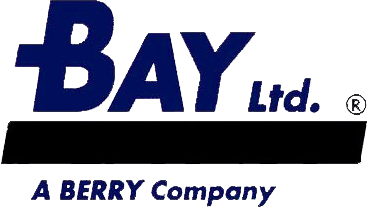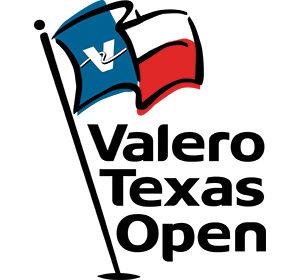Media Center Interviews
March 30, 2021
Pre-Tournament Interview with Matt Kuchar
JACK RYAN: We would like to welcome Matt Kuchar into the interview room at the 2021 Valero Texas Open. Matt's coming off a third place finish at last week's WGC Dell Technologies Match Play where he won in the consolation match.
Matt, what was the biggest takeaway from you coming out of that week and did it give you a lot of confidence coming into this week?
MATT KUCHAR: Yeah, it was fun for me to play some good golf again. It had been a while for me, Jack. Since the break, really been somewhat frustrated, disappointed with my performance and it was so nice to regain some form and play some good golf.
Certainly I've had some success at Austin Country Club, had some success in the Match Play event. I tell people, listen, you can't count on returning to a course, you can't count on returning to a format and think you're going to do well. If you're not playing well, you're going to go 0-3 in that format, it's as simple as that.
Thankfully, I got some good work in with my instructor Chris O'Connell. We've been working hard the past six, eight months trying to sort things out. Finally, it's turning the corner and it feels good. I take a lot of confidence from the sheer fact of hitting quality shots. Winning matches, there's certainly a lot of luck that's involved. You could run into a guy that just makes more birdies than you, plays better. You could play great and still lose.
So, hard to necessarily figure out how much confidence to take away from wins versus losses, but hitting quality shots, you kind of know as a golfer when you're properly hitting quality shots or not, and it was nice to hit some quality shots. Match play forces so much pressure on you in so many situations. It feels like every hole feels like the last hole of a tournament. It had been a while since I felt like I had played some truly meaningful golf. A lot of Thursdays, Fridays and even Saturdays, Sundays where 40th place finishes where you're not totally stressed out like you are coming down the back nine Sunday with a chance to win. Match play puts you in that situation kind of almost every match. Every match felt like it was truly meaningful golf and to be able to execute under those situations was certainly a good feeling.
JACK RYAN: Coming into this week, this is your 16th appearance at this tournament. Does it feel like that many and how do you feel being back at the Valero Texas Open?
MATT KUCHAR: It is hard to believe. I run across so many of the new, young rookies and guys that have been out three, four years. I remember being in their shoes asking some of the older veterans, "How many years have you been out," and they say, "18 or 20," and you go, "Oh, man, that's incredible." Now here I am spitting out answers like that. I'm on the other side.
Being here 16 times is certainly a good stretch, a good number. I remember back in the day at La Cantera having some success, I remember being back there as a kid playing on sponsor exemptions, trying to earn enough money to get my card and I think it was at La Cantera where I locked it up several years ago. Had maybe a second place finish to Justin Leonard and with that earned enough money to gain a Tour card.
A lot of great feelings at the Texas Open. Certainly I've come to really enjoy the golf course here at TPC San Antonio. I really enjoy coming playing here, it's a great setup. My kids come, they've got an incredible hotel, water park, secondary golf course as well that the kids sneak out on in the afternoon and get some golf of their own in. So it's a fun week all around.
I actually think it's a wonderful spot just before the Masters. I think there's nice topography out here, nice undulations, nice kind of change of elevation. You've got to drive the ball well here, and then the approach shots have some characteristics similar to Augusta with the elevation changes, with the runoffs, the collection areas. I think it's a nice warm-up for next week's Masters as well.
JACK RYAN: With that, we'll open it up to questions.
Q. Had a couple questions looking back and going forward if you will, but it was so peculiar last week with Scottie on 12 and 13, back to back, those water balls, of you being away even though he was 100, 150 yards behind you. Who raised that situation where it's all about where the shot was horizontally and not necessarily vertically?
MATT KUCHAR: Well, that was the semifinal match, so we had a walking official with us. I believe it was -- I can't remember if John was with us in that match or if it was Pete.
Q. Either way.
MATT KUCHAR: It was Pete, yeah. He's the one that brought it up. I think I was playing -- the day before I was playing Jordan Spieth, I remember -- sorry, I was playing Brian Harman. Jordan Spieth was the group in front of us and they had a similar situation on 13. Took forever to kind of watch them play 13. We hit a bunch of extra putts on 12 just waiting for them to kind of get through 13.
Then when it came to us, I had forgotten that rule. I had been aware of it in the different match play situations I've been in, but it's one that I've never actually -- I don't recall having to have that be part of my match situation. I remember being told of it. So when I got into the situation with Scottie, it was kind of a head scratcher. I get how it works, but I don't understand it and I probably don't quite agree with it, either. I just can't figure out a situation where it truly makes sense. When a ball is completely unplayable, I don't understand why that -- why the away process changes in that situation, when somebody has to clearly take a drop somewhere further away.
And I don't know -- there's so many questions. I don't know what happens to a ball that's out of bounds in that situation. Like let's say it's out of bounds in that situation and not just a hazard, do I have to go up and hit my shot before he hits his third shot if his ball out of bounds was closer than mine?
What if we both hit it in the water on 13, how do you determine whose ball was closer and then who plays their next shot first? If we had both rinsed it, somebody clearly is closer to the hole where their ball lies. So the order of play, there's so many questions there that kind of are head scratchers, I don't quite follow.
Q. You're making me confused now, I gotcha.
MATT KUCHAR: Head scratcher. It's part of the rules we play, you know, just how they tell us. Glad to have a rules official there to keep us straight, something that is certainly a bit confusing.
Q. Secondly, this is more about the Masters. For you, does it feel like you were just there five months ago or is there any sense of this feeling more normal because it's part of kind of the spring schedule, the routine?
MATT KUCHAR: I feel like we're back in the routine. It does seem like, again it was five months ago, so not quite the normal year between, but this kind of has the sense of this is real, this is Masters again when it should be.
I certainly was awfully glad to play it in the fall when we did. Any chance to play the Masters tournament whenever they tell us, we'll show up, but this feels more like Masters is truly here and going to be much more normal than it was last year.
Q. Matt, was there a low point during the stretch before the Valero Texas Open that really got to you? Basically, how did you keep moving forward during this long stretch?
MATT KUCHAR: There was certainly huge amounts of frustration. Definitely some lows, and that's what golf does to you. My wife was such a big supporter, a big help, kind of letting me know I'd been pretty fortunate in my career not to have too many, let's call it slumps. I had kind of been able to play some pretty consistent golf for a long stretch of time, where golf for most people, you hit a lot more highs and lows in this game. It's hard to play well week in and week out. Golf just is able to beat you up more than most other games.
I fortunately didn't have many of those experiences and kind of expected it to continue on that way, but found myself in one of those slumps or ruts or kind of a stretch of golf that I was very, very unhappy with. But my wife said, "Listen, you've got to stay positive, you've been so consistent, this is a normal thing. If you just stay the course, keep working, it will get better."
So thankfully, between her, family, Chris O'Connell, we kept working. And it is one of the great things about this game is when you're playing great, you can't wait to keep on playing, you can't wait to continue the good play. When you're playing bad, you wake up and you can't wait to fix it, you can't wait to go out and make it better. So I certainly had that bug going, well, I know if I sit around, I'm not going to get better, I've got to keep trying things out.
Maybe that was one of the biggest frustrations was you kind of have a bit of a Rolodex of swing keys. All right, if I'm hitting these shots as my bad ones, this is how I fix it. I'd go through my Rolodex and really struggle to fix it. Even with Chris' help, there was times where I knew I was going down the right path, yet still my misses were really costly. For so many years, my misses were, I'd say, playable. I think my dispersion -- golf's so much a balance between how good are your good ones and how bad are your bad ones. If you can make your good ones good and your bad ones just okay as opposed to being truly bad or truly costly, you've got a chance to play great golf. Thankfully, my bad ones were always somewhat playable. Then for a stretch my bad ones got bad and really costly and I was packing up my bags Friday far too often.
So glad to have gotten out of that, but yeah, there were some serious frustrations. I don't know if I've ever hit as many balls, I don't know if my hands have ever hurt so bad. I'd go out the next morning and go, my body's hurting, my hands hurt, but I know I've got to stick to it. The only way of getting out of this is figuring it out. Thankfully, the work with Chris has definitely paid off.
Q. You played in this event obviously 16 times. It's been here since 2010, so you have a fair amount of experience at TPC San Antonio. The fifth hole has a new tee box this year. It used to be 340 yards, now it's going to be playing at about 400 yards. How does that change your strategy with how you played it in the past when it could possibly have been a drivable par 4 depending on the conditions?
MATT KUCHAR: Yeah, I did not know that. I'll be interested to see how the Tour officials set it up. I think the officials have done a great job week in and week out of setting the course up to be different, enjoyable, fair, fun, the whole gamut. I think it's always nice when you get options.
Sounds like we'll have some options, sounds like if they push it back, it no longer will be drivable, at least not for the majority of us. So I think guys will be playing it proper -- to a certain position, certain yardage trying to take advantage. I imagine they'll still put it up where it will be drivable. When it's back, again, you're looking to put yourself in the best position. That fairway's not the easiest to hit. I've had conditions even in the old style where wind was into you and trying to lay up to a spot is a tricky fairway to hit. So from 400 yards, the fairway's fairly small, but that's kind of what you want in a short par 4, you want a guy that finds the fairway, a chance to make a birdie; the guy that misses the fairway, he's struggling to make par.
Q. Hey, Matt. Yeah, you've talked about working with Chris. I was just curious what specific changes you guys were working on. It sounds like maybe it was a few things, but what's been successful?
MATT KUCHAR: It's a continuation of trying to eliminate clubface rotation through impact. The smaller amount of face rotation, the more consistent you are. What do they call it, rate of closure, ROC I think they call it, rate of closure. The smaller that rate of closure is, the higher quality, the more often you're going to hit quality shots.
We work on trying to have as little of that through impact as possible. I feel like I play a little bit more shut to open, face stays square longer. It was just I was getting in a place where I was coming in probably from too steep of a position and trying to shallow it out and in doing so, creating some bail-out, creating some more face closure.
So we've just, we've worked on dialing that back and fortunately getting on something where it feels good again, feels consistent again.
It's funny as a professional golfer how rare you hit just the perfect golf shot, but it's coming out of the center of the clubface so much more often now than it was the past three, four months. It's much more fun, much more enjoyable again.
Q. How much -- how technical do you personally get? Like how into the video, the TrackMan numbers, you know, force plates, all that stuff, or do you let Chris look at certain things and then he tells you certain things?
MATT KUCHAR: Technical with kind of a -- I'd say more I like to have a mechanical thought in my head. I think of it as a kind of a mental occupier. I think some people try to just focus on exactly the shot that they want to hit, not have any technical thought. I think if I have a technical thought in my head, it keeps me from thinking about don't hit it left, something like that.
So I have a -- I like to have a swing thought, but as far as technical and numbers related, I honestly think I'm a little bit more old school in that you can tell when you hit a ball if it's hit properly. I can kind of tell you exactly what that ball has done as far as spin and launch and all those things without a TrackMan. You put a TrackMan down and it could confirm it, but I think it's pretty easy to tell when you've played long enough to see what a proper golf shot is and then know what those numbers are going to be.
I kind of think that the golf ball's the true thing that doesn't lie. I think you put all of the inputs in with your swing, the ball shows you exactly what inputs you've put in. To fix it, you kind of work backwards from there. I don't get overly technical with TrackMan numbers or force plate. We've talked a little bit more about stats, strokes gained, kind of where you need to kind of make up my ground. I clearly know that strokes gained off the tee, I'm probably going to be giving up some shots to the great drivers of the golf ball and I need to be gaining shots kind of from approach and in. I think about that a bit. Where my strengths need to be really strong is kind of approach shot forward, but certainly off the tee, I can't give up too much. I need to be kind of level with strokes gained off the tee and then be gaining from there in.
Q. Matt, thanks for doing this. Just curious getting back to what Fergie was asking you a little bit more about Augusta. I'm curious what your memories were of that November Masters and how kind of strange that was and if there's any specific moments that you -- recollections of that week that just seem to different.
MATT KUCHAR: I felt like I certainly had a lot more time than normal. I think that's one of those things, without the fans, without the kind of the extras that go along with tournaments, and in the past couple months we've had a lot of those, feel like there's a lot more free time.
So I actually had some great catch-ups with some friends of mine that are members there was what stood out in my mind. I think normally it's a little bit more business as usual. You go about your work on the course, you get back home. With the freedom of kind of space and time, I was able to kind of hang around the club. I saw a lot more of the property than I've ever seen. We had a couple restarts and I remember driving around, we stopped I think on the fifth hole one day and kind of did the outer loop. I didn't even know about this outer ring around the property with all these buildings I had never seen before.
So I saw some things I had never seen before around Augusta National and had some fun catch-ups with members that I think everybody tends to be so busy that week, that slowing down for an hour here, half hour there for some nice catch-ups doesn't normally happen. So that was kind of the unique thing about last year's November Masters for me.
Q. Starting to come out of left field on this one, but I was starting to do something on the sixth hole at Augusta and wondering if you can speak to the challenges, lack of challenges, whatever you want to call it about that hole.
MATT KUCHAR: Yeah, there's basically two pins that are really, really difficult: The top right shelf and back left. Those two are hard to get a proper birdie putt to.
The top right, that shelf is so small it feels like you've got a kind of 12-foot radius to be able to hit to and you miss that, you've got your work cut out for you.
That back left, very similar. Trying to be aggressive enough to get a ball to stay up in that, again, probably a 10-foot radius is very, very risky.
You kind of just take your medicine there, hit it 20 feet short of the hole, watch it roll back to 30 or 40 feet short of the hole and understand that you'd love to just walk away with three. When they give you a pin kind of on the front left side of the green, you feel like that's one you hope to have something inside of 15 feet for birdie and maybe take advantage then. Standing up there with a 5-, 6-, 7-iron, it is a difficult demanding shot where most of the time, middle of that green is typically, for most of the pins, leaving you with a challenging 40-foot putt. You do your best to just two-putt and get out of there with a three.
Q. Jordan said he felt like that front pin, you felt like you were giving something away if you didn't make two and the back pin, you felt like you were taking one away if you made three.
MATT KUCHAR: I'm not sure it's quite to that strokes gained amount, but you certainly love making threes. Maybe you gain a quarter of a shot when you make three to either of those back pins and then the front pins you may gain a half shot with a birdie. It's probably not even that much. But shoot, I'd take four threes there every week.
JACK RYAN: Matt, those are all the questions we have. We appreciate your time and best of luck this week.
MATT KUCHAR: Jack, thanks so much.
















